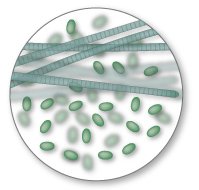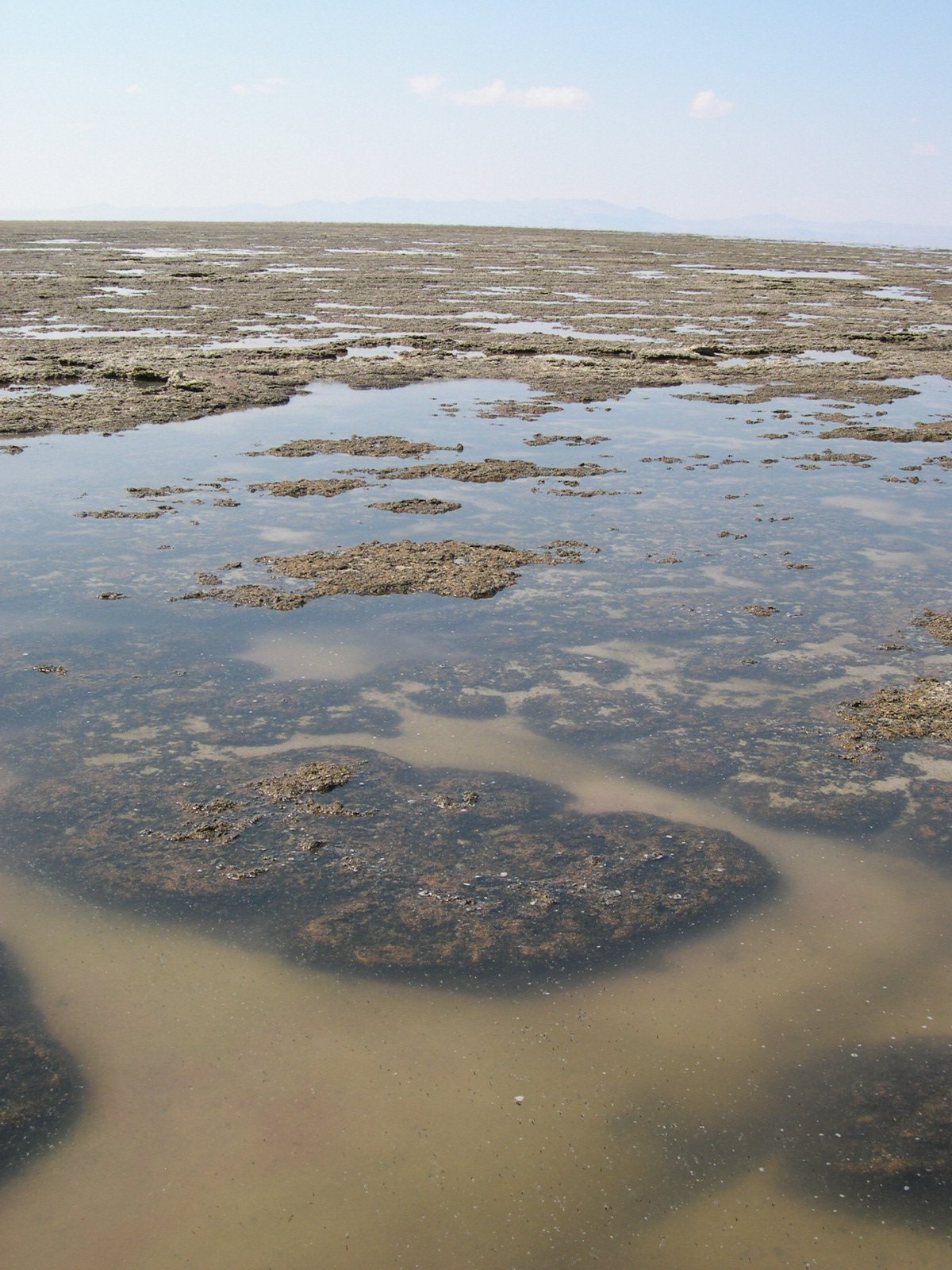The shallow bottom of Great Salt Lake supports a microbial carpet that harness the sun's energy through the process of photosynthesis. This carpet is made up of a community of microbes, including several types of cyanobacteria (also known as blue-green algae), algae and other organisms. The bottom-dwelling microbes are often referred to as benthic algae.
Free-floating algae such as Dunaliella that live higher in the water column typically bloom early in the year, blocking sunlight from reaching the lake bottom. Later in the spring, brine shrimp begin to hatch and quickly graze down the Dunaliella population. This increases the clarity of the water, allowing sunlight to reach the lake bottom, and providing energy for the bottom-dwelling community to bloom. Cyanobacteria are a source of both food and oxygen for developing brine fly larvae, which become plentiful during the summer and early fall.

